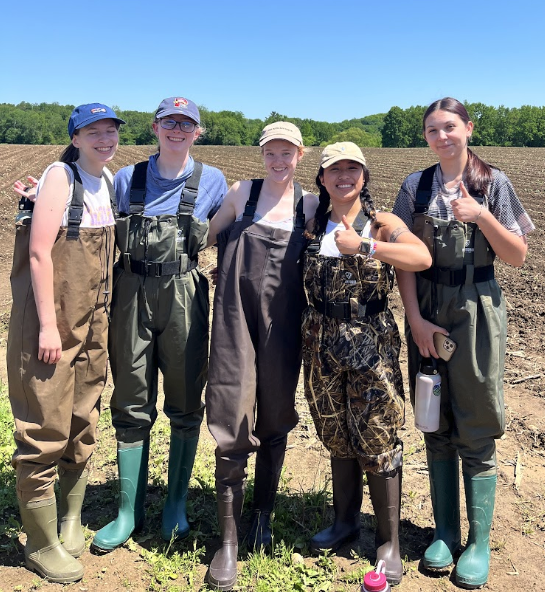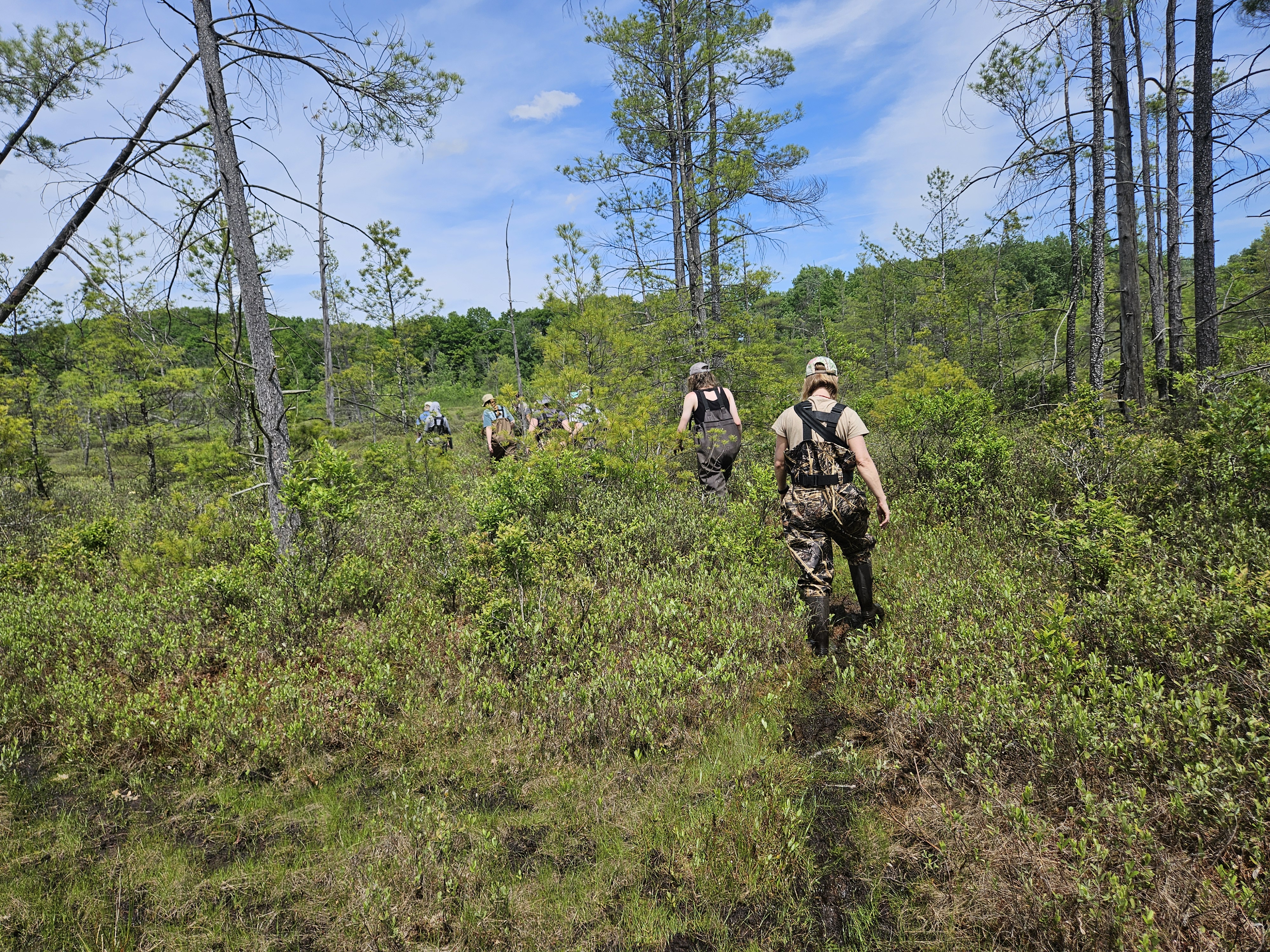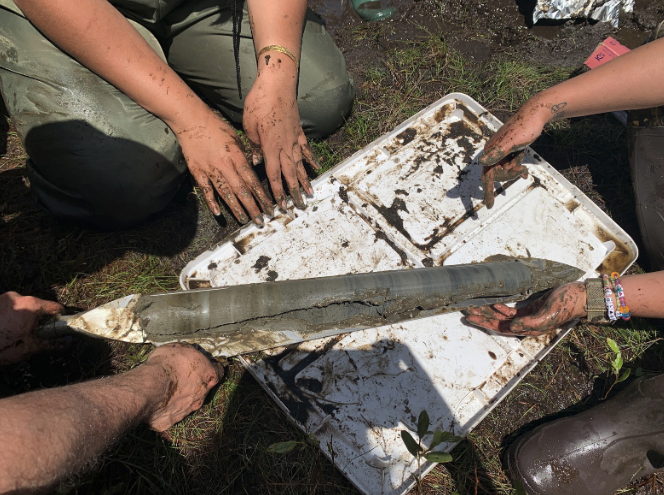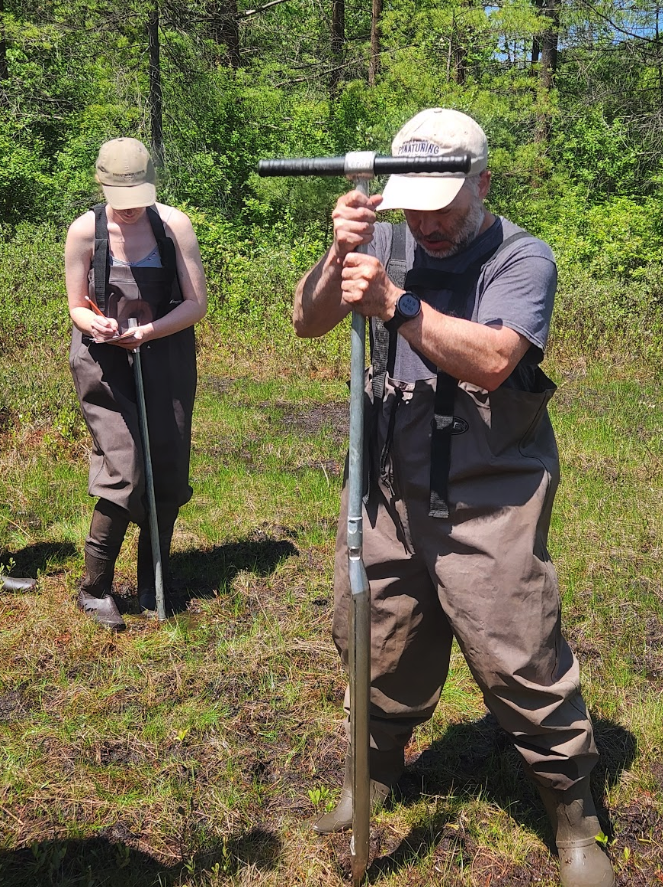Bob’s Bog Burritos
By Audrey and Marin, PLE wetlanders
Today we started off with a short lecture with our beloved professor Bob about peatlands and their beautiful layers.
The acrotelm, the top layer, hosts more aerobic respiration and movement of water and nutrients.The catotelm or the bottom layer, is comprised of the buildup of organic material where decomposition is exceedingly slow. We also discussed plants that we might see in the bog and their wacky adaptations to obtain nutrients such as Drosera rotundifolia trapping insects with its sticky glands, and Sphagnum acidifying the environment.
Then we got suited up to bog out with not one but TWO extra special rest stops along the way. We drove out to a location that at first simply appeared to be some person’s farm, but as we were soon to find out, this was not our final destination. We met our tour guide, Tim Lyons from the Botanical Society of Western Pennsylvania and Presque Isle Audubon Society, who led us through the semi-deadly moat to end up at the cathedral of Titus Bog.


Along the way, we observed many familiar wetland plant friends like Osmunda cinnamomea and Symplocarpus foetidus.



Once we reached the promised land of Sphagnum and it’s peat waterbed, we collected peat core samples to study the wetland’s history. We dug deep into the bog’s heart (10 meters!), retrieving sediments from soon after the glaciers retreated in the area! The core samples were individually wrapped in plastic wrap and aluminum foil, creating the ultimate meal for a wetland ecologist: bog burritos.






Afterwards, we took a stroll around the peatland kingdom and observed the rare orchid Arethusa bulbosa the iris Iris virginica, and a number of other bog plants.
After a successful adventure, we said goodbye to our lovely guide and headed back to PLE: the happiest place on Earth.
Posted on May 25, 2024, in Wetland Ecology & Management (PLE) and tagged Biodiversity, Bog, Conservation, Ecology, Ecosystems, Nature, Paleoecology, Plants, Science, Wetlands. Bookmark the permalink. Leave a comment.


Leave a comment
Comments 0